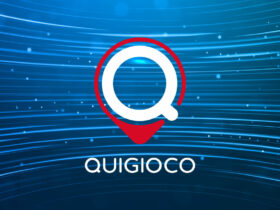In this article, you can find tips on how to find a catchy catchphrase that will help your business
Distinguishing yourself from the competition and conveying the essence of a brand or product are the main requirements of slogans
Types, functions and purpose of the slogan
A slogan is a phrase capable of expressing the meaning of an advertisement. It serves to evoke and establish in the public the necessary associations with the brand or product. If the sentence is short and understandable, if (together with the name and logo) it is accompanied by the product and is also displayed in the advertisement, the public will remember it. In this case, we can say that the slogan has fulfilled its functions. Among them we find:
There is no classification of slogans: each expert offers his, and all are correct in their own way. For example, there is a technique for separating phrases into rhyming and non-rhyming sentences, including the company name or independent ones.
You can do this more easily by dividing the slogans into product and brand:
- those relating to merchandise are designed to increase sales. Focus on a unique selling proposition (“He keeps going and going and going”)
- those of the brand (or image) that express the company’s philosophy (“I’m Lovin ‘It”).
There are also unified solutions, where the product offering is combined with the brand philosophy. For example, “Nokia: Connecting people”. Bottom line: When creating a slogan, you need to decide exactly what and to whom it should convey. This is even more important than trying to classify messages and “guide” them into predefined binaries.
How do you create a slogan to attract the public?
The work of creating a brand or product slogan can be divided into two phases. The first phase includes data collection and analysis. The second has to implement ideas based on the information received. The process works like this:
Once the information has been received, recorded and analyzed, the creative period begins. In this phase, the creators understand what the slogan is for and who it is intended for. What to do next:
- study the slogans of the competitors to avoid repetition;
- generate different alternatives (more on that later);
- analyze each option, eliminating the inappropriate ones;
- test favorite slogans on customers belonging to target groups.
Requirements for an effective slogan
The first is conciseness. The best slogans are 1-6 words long (“Think” by Apple or “Drive Your Dreams” by Toyota). At the same time, emotionality and memorability are very important: to impress the audience and be recognized in a simple way. Simplicity is important so that every word can be pronounced easily. The slogan must have a meaning: so the customer understands what it is and associates the image of the product with the sentence. For example, the PlayStation phrase: Live in your world, play in ours.
Specificity and uniqueness, customer focus, are other criteria relating to effectiveness. (“Easy as Dell”). Using competitors’ slogans as a basis is bad practice, as doing so can confuse the audience.
3 famous slogans: why they work
Let’s analyze why these phrases became famous and what benefits they brought to brands.
Why Io Valgo by L’Oréal
Women use cosmetic products to enhance their status and attractiveness. The slogan does not describe the brand’s products, but rather says that the cosmetics will give the owner the look she deserves.
The phrase allowed the company not to limit itself to being the usual cosmetics manufacturer and to reach premium customers. This is part of the branding strategy.
Betcha Can’t Eat Just One di Lay’s
A good message that any snack maker could fit. It’s just that Lay’s got there first and did it with some success. The sentence is not about taste or properties. On the contrary, the emphasis is on the peculiarity of human psychology: few people manage to stop eating potato chips.
The slogan has successfully carried out the brand’s marketing strategy: reaching the maximum target of people who buy snacks. The sentence was accompanied by an advertising campaign in which the temptation to eat potato chip after another was compared to offering an apple to Eve and other similar stories.
Think Different di Apple
This slogan was used for an advertisement dedicated to people who have gone against the system and managed to change it. The phrase is a great example of how you can borrow a slogan from your competition and give it an ironic twist. While the company’s direct competitor was being promoted with the phrase “Think IBM”, Apple was proposing “Think Different”.
With this phrase, the public was offered innovative products – powerful and easy to use. It was a very different view of personal computers. According to Forbes, the brand’s shares tripled in the year the campaign launched. The modern slogan has been shortened to “Think”.
From theory to practice: 3 ways to create a slogan
Make it yourself
To begin, choose 50-70 words that describe your company / product. Then find some synonym for each word. For convenience, distribute the words with a diagram or table. Then, choose the words that suit you the most. Based on these, you propose options for slogans. Avoid templates (such as “We are the best”), jargon and phrases that only a few could understand. Choose the best solutions according to the criteria of originality, uniqueness, credibility, reflection of the brand’s personality. Test them on target groups.
Positives: the possibility to independently and free of charge create a slogan that reflects the company’s philosophy.
Downsides: significant time investment, low efficiency.
Use an online generator
The Logaster service offers a practical and free slogan generator. Automate all the processes illustrated in the previous paragraph. It is enough to indicate only the name of the company and the sector. The service will generate dozens of ready-to-use phrases. You just have to choose the ones that satisfy you most and take tests.
Positives: full automation, free generation, possibility to get a slogan with a unique corporate style and a logo.
Downsides: only 23 thematic areas to choose the specificity of the activity.
Contact a copywriter
Find writers and give them all the information they need about your brand, products, audience and competition. Its task is to create several equivalent variations of the slogans.
Positives: Professionals create potentially effective sentences.
Downsides: The services that a good copywriter offers are expensive: Typically, the price for a slogan is $ 200 minimum. The services of the most well-known creative agencies can cost figures with three or four zeros.
Conclusion
If you want to stand out from the competition, create a positive brand image, retain your target audience and, consequently, increase sales, you need a slogan. Think of its creation as the development of a real advertising tool. Analyze your customers and your company. Find out what the public needs. Highlight your key advantage. Create a simple sentence that is easy to remember right away.















Leave a Reply
View Comments